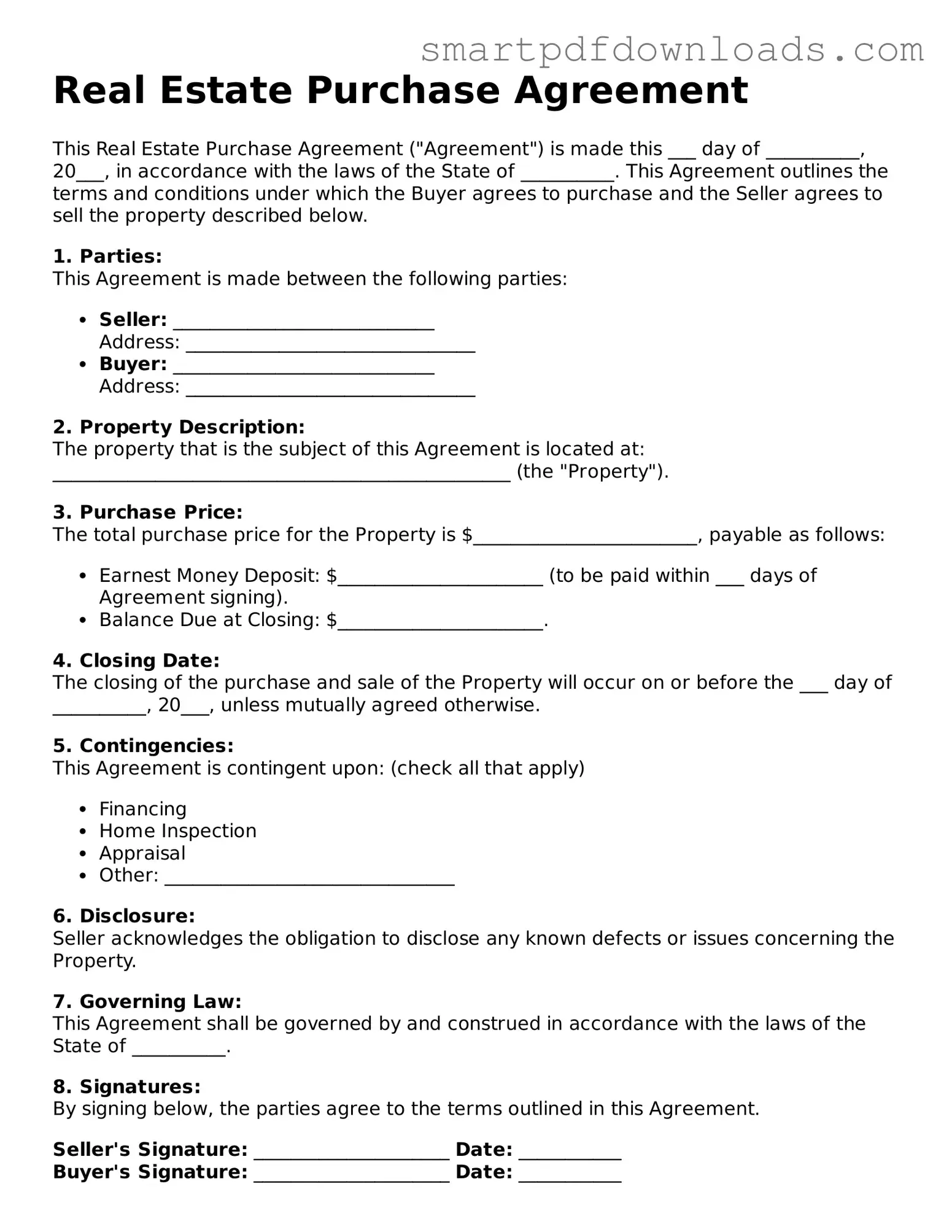Real Estate Purchase Agreement
This Real Estate Purchase Agreement ("Agreement") is made this ___ day of __________, 20___, in accordance with the laws of the State of __________. This Agreement outlines the terms and conditions under which the Buyer agrees to purchase and the Seller agrees to sell the property described below.
1. Parties:
This Agreement is made between the following parties:
- Seller: ____________________________
Address: _______________________________
- Buyer: ____________________________
Address: _______________________________
2. Property Description:
The property that is the subject of this Agreement is located at:
_________________________________________________ (the "Property").
3. Purchase Price:
The total purchase price for the Property is $________________________, payable as follows:
- Earnest Money Deposit: $______________________ (to be paid within ___ days of Agreement signing).
- Balance Due at Closing: $______________________.
4. Closing Date:
The closing of the purchase and sale of the Property will occur on or before the ___ day of __________, 20___, unless mutually agreed otherwise.
5. Contingencies:
This Agreement is contingent upon: (check all that apply)
- Financing
- Home Inspection
- Appraisal
- Other: _______________________________
6. Disclosure:
Seller acknowledges the obligation to disclose any known defects or issues concerning the Property.
7. Governing Law:
This Agreement shall be governed by and construed in accordance with the laws of the State of __________.
8. Signatures:
By signing below, the parties agree to the terms outlined in this Agreement.
Seller's Signature: _____________________ Date: ___________
Buyer's Signature: _____________________ Date: ___________
